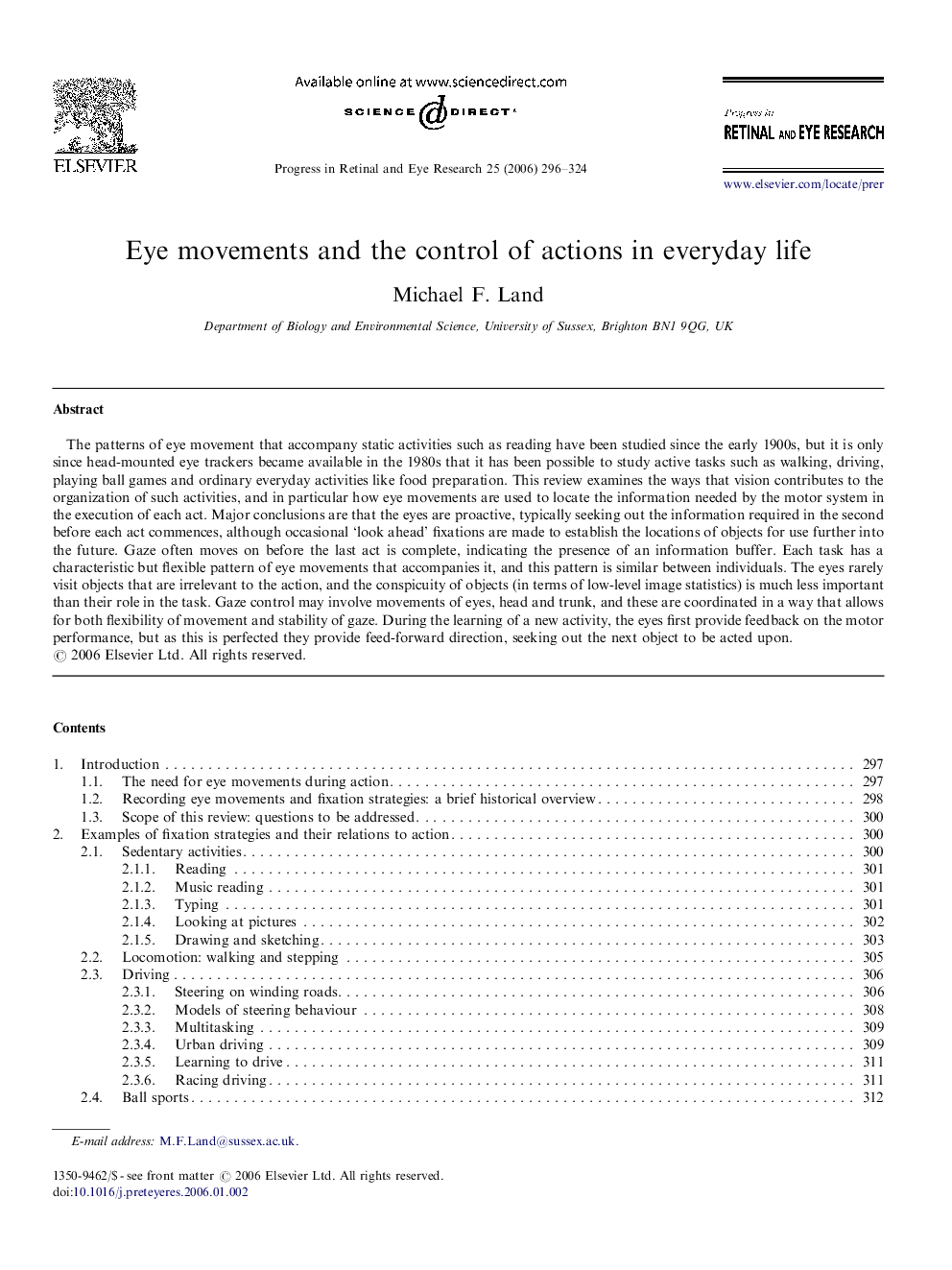| Article ID | Journal | Published Year | Pages | File Type |
|---|---|---|---|---|
| 4032218 | Progress in Retinal and Eye Research | 2006 | 29 Pages |
The patterns of eye movement that accompany static activities such as reading have been studied since the early 1900s, but it is only since head-mounted eye trackers became available in the 1980s that it has been possible to study active tasks such as walking, driving, playing ball games and ordinary everyday activities like food preparation. This review examines the ways that vision contributes to the organization of such activities, and in particular how eye movements are used to locate the information needed by the motor system in the execution of each act. Major conclusions are that the eyes are proactive, typically seeking out the information required in the second before each act commences, although occasional ‘look ahead’ fixations are made to establish the locations of objects for use further into the future. Gaze often moves on before the last act is complete, indicating the presence of an information buffer. Each task has a characteristic but flexible pattern of eye movements that accompanies it, and this pattern is similar between individuals. The eyes rarely visit objects that are irrelevant to the action, and the conspicuity of objects (in terms of low-level image statistics) is much less important than their role in the task. Gaze control may involve movements of eyes, head and trunk, and these are coordinated in a way that allows for both flexibility of movement and stability of gaze. During the learning of a new activity, the eyes first provide feedback on the motor performance, but as this is perfected they provide feed-forward direction, seeking out the next object to be acted upon.
